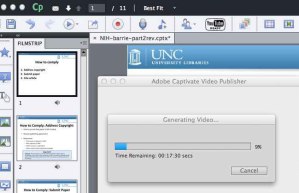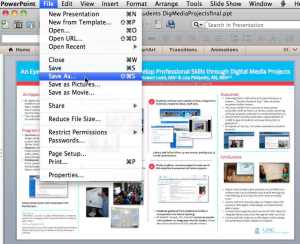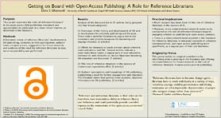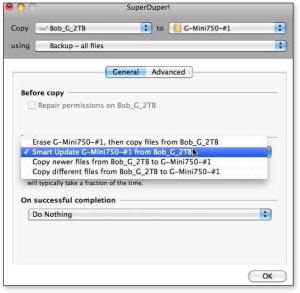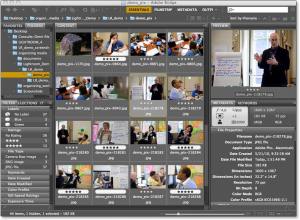This is a process that seemed like it would be a piece of cake but turned out to be more difficult and time-consuming than I imagined. A couple of colleagues did a 45-minute presentation which they audio-recorded. My task was to generate and upload a YouTube video matching the Powerpoint slides to the audio. This is what I did:
1. I opened the .wav format audio (recorded using a Zoom recorder) into Adobe Audition. I edited the audio to eliminate background hum and some parts that were clearly unusable or not needed.
2. I gave a copy of this edited file to the presenter’s assistant, who went through it to identify and write down start/stop points for each of the 38 slides.
3. In Adobe Audition, I added markers for the start point for each of the slides. I converted the markers to range markers (pairs of markers that identify ranges, e.g., 2:21 – 3:07) and then moved the ending marker for each range to the appropriate place in the timeline. (Note: I shortened this task by combining the audio segments for the last six or seven slides, which were short, into one range.)
4. I exported the range markers to individual .mp3 files.
5. I imported the Powerpoint slides into Adobe Captivate 6, and did some tweaking to make sure the slides looked good.
6. I imported the audio files into Captivate, one at a time, in most cases one audio for each slide. (For the last several slides, I used Captivate’s editor to match a longer audio across several slides. This did not seem to be any more efficient. But it was worthwhile to test this other approach.)
7. I tweaked the Captivate presentation audio and slides.
8. I exported the Captivate presentation to an mpg4 file for review by the presenter’s assistant.
9. I made a few additional edits based on her comments.
10. As requested, I broke the Captivate presentation into three parts and saved each part as a separate file.
11. I exported each of the parts as mp4 files.
The export process is somewhat time consuming. As you can see, exporting a section of 11 slides took around 20 minutes.
12. I uploaded the mp4 files to YouTube, created a playlist, and added descriptions.
13. Based on feedback, I tweaked the sections (which slides are included in each section), and uploaded the sections to YouTube again.
As you can probably tell from the above, what on first blush may seem like a simple task may sometimes turn out to not be so simple. Next time I think I will probably try a different approach. One alternative would be to import the edited audio into a full-motion screencasting program such as Screenflow or Camtasia and then record the presenter flipping through the slides in real time as the audio plays. That would probably be a less painful way to match the slides to the audio.
Or another possibility: Video-record the presentation live. Now that’s a novel idea. 🙂
